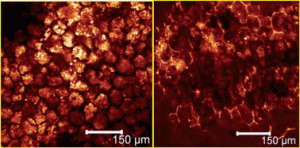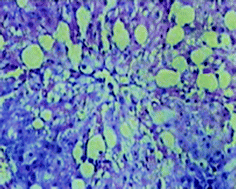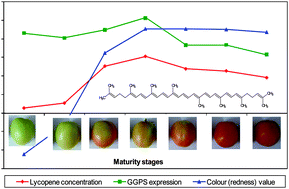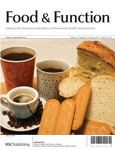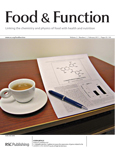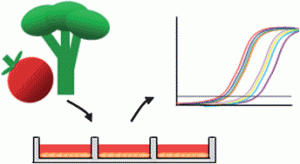This month sees the following articles in Food & Function that are in the top ten most accessed:-
Anti-inflammatory activity of natural dietary flavonoids
Min-Hsiung Pan, Ching-Shu Lai and Chi-Tang Ho
Food Funct., 2010, 1, 15-31, DOI: 10.1039/C0FO00103A, Review
Antioxidant and antihepatotoxic effect of Spirulina laxissima against carbon tetrachloride induced hepatotoxicity in rats
Gini C. Kuriakose and Muraleedhara G. Kurup
Food Funct., 2011, Advance Article, DOI: 10.1039/C0FO00163E, Paper
Conjugated quercetin glucuronides as bioactive metabolites and precursors of aglycone in vivo
Junji Terao, Kaeko Murota and Yoshichika Kawai
Food Funct., 2011, 2, 11-17, DOI: 10.1039/C0FO00106F, Review
(-)-Epigallocatechin-3-gallate increases the expression of genes related to fat oxidation in the skeletal muscle of high fat-fed mice
Sudathip Sae-tan, Kimberly A. Grove, Mary J. Kennett and Joshua D. Lambert
Food Funct., 2011, 2, 111-116, DOI: 10.1039/C0FO00155D, Paper
Multistage carcinogenesis process as molecular targets in cancer chemoprevention by epicatechin-3-gallate
Min-Hsiung Pan, Yi-Siou Chiou, Yin-Jen Wang, Chi-Tang Ho and Jen-Kun Lin
Food Funct., 2011, 2, 101-110, DOI: 10.1039/C0FO00174K, Review
Insights into the putative catechin and epicatechin transport across blood-brain barrier
Ana Faria, Diogo Pestana, Diana Teixeira, Pierre-Olivier Couraud, Ignacio Romero, Babette Weksler, Victor de Freitas, Nuno Mateus and Conceição Calhau
Food Funct., 2011, 2, 39-44, DOI: 10.1039/C0FO00100G, Paper
Estimation of dietary intake of melanoidins from coffee and bread
Vincenzo Fogliano and Francisco J. Morales
Food Funct., 2011, 2, 117-123, DOI: 10.1039/C0FO00156B, Paper
Comparison of the polyphenolic composition and antioxidant activity of European commercial fruit juices
Gina Borges, William Mullen and Alan Crozier
Food Funct., 2010, 1, 73-83, DOI: 10.1039/C0FO00008F, Paper
Function of Plectranthus barbatus herbal tea as neuronal acetylcholinesterase inhibitor
Pedro L. V. Falé, Paulo J. Amorim Madeira, M. Helena Florêncio, Lia Ascensão and Maria Luísa M. Serralheiro
Food Funct., 2011, 2, 130-136, DOI: 10.1039/C0FO00070A, Paper
Mechanisms underlying the cholesterol-lowering properties of soluble dietary fibre polysaccharides
Purnima Gunness and Michael John Gidley
Food Funct., 2010, 1, 149-155, DOI: 10.1039/C0FO00080A, Review
Why not take a look at the articles today and blog your thoughts and comments below.
Fancy submitting an article to Food & Function? Then why not submit to us today or alternatively email us your suggestions.
Comments Off on Top ten most accessed articles in February













